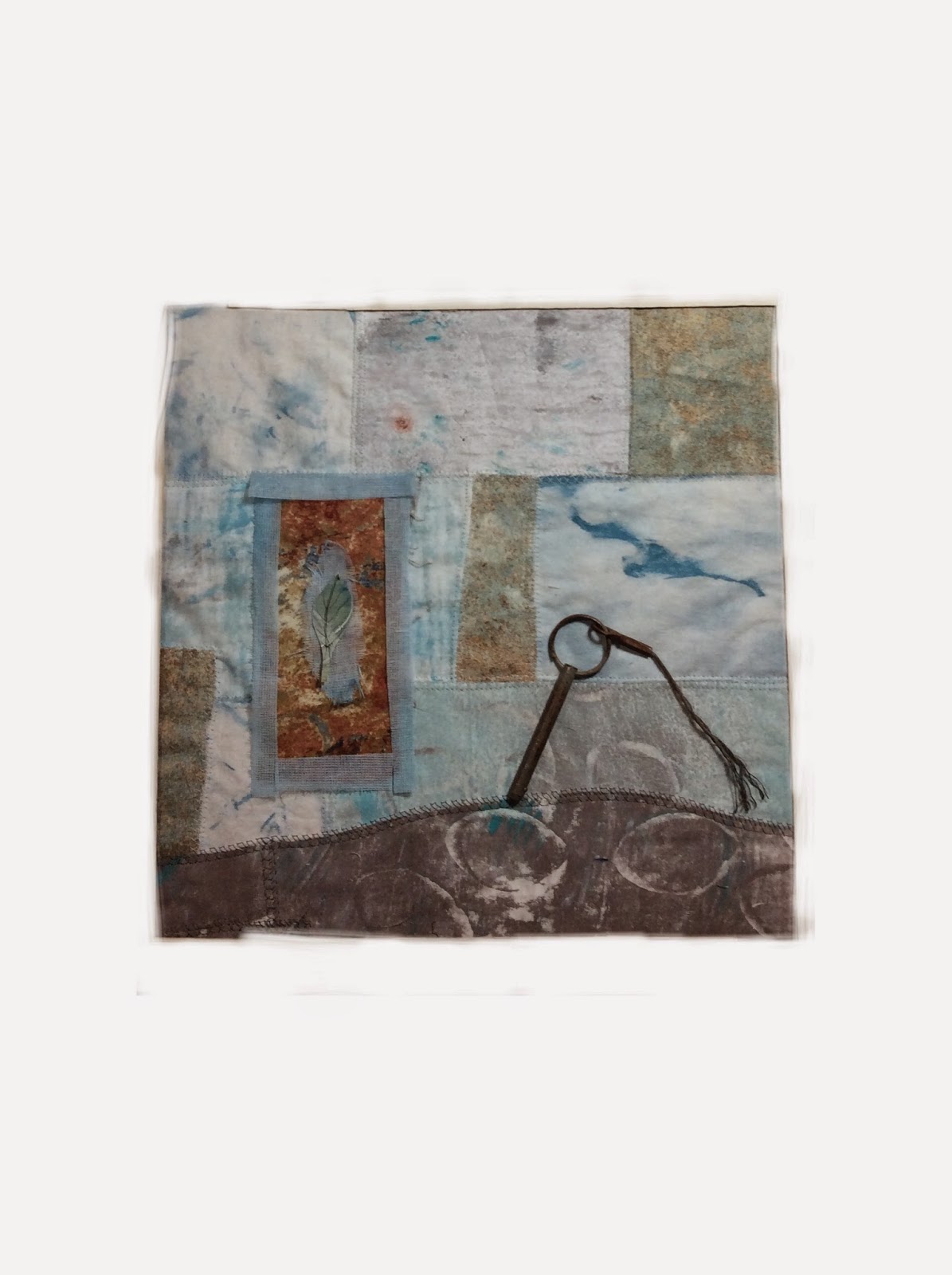There has been a lot of talk of making mixed-media collages and journal pages. So I decided to try my hand at making a couple of small collages. But since I'm a fiber artist, I didn't know what to do with the collages once I was done with them. They were made from papers and mounted onto cardboard.
First, let me tell you how I made them. I was inspired to make something fairly quick and play with paint, paper, my gelli plate, and various tools, and just have fun in an afternoon.
Here are the ingredients:
scrap plain paper, an envelope, some gift wrapping paper, an old movie ticket, some pieces of a watercolor painting I made that didn't work out, some postage stamps I had saved, some maps from a pocket calendar, and magazines.
Here's the process:
1.) I spread acrylic paints on my gelli plate and monoprinted a bunch of small papers and even an envelope.
 |
| monoprinted papers and envelope |
2.) I cut the monoprinted papers into shapes that I found in the magazines. Such as a bird shape and people shapes. I cut out words from the magazines.
3.) I cut out pieces from the gift wrap, from the watercolor painting, etc.
4.) I used matt medium to glue large rectangles of the monoprinted papers and gift wrap onto a cardboard background to create a background. This was a mistake, it turned out, because the cardboard warped when it dried. I should have also applied the matt medium to the back of the cardboard. I applied gesso to the back and then matt medium when I was finished with the whole thing and that did the trick to unwarp it.
5.) Then, for me, the quick part was over. I couldn't decide where to put the elements. I'm a slow designer. It took several days to decide. But here are the finished collages. I glued all the pieces down with matt medium underneath and then another coat on top of the whole thing.
 |
| Big Horizons on cardboard |
Big Horizons represents my husband and I as travelers, because we do travel a lot. The movie ticket is from The Adventures of TinTin which we saw in 2011. We discovered TinTin together in a used book store in Nepal in 1984 so it is very special to us. We had never heard of it before that. My husband is from Argentina, hence that part of the map.
 |
| Outside the Lines on cardboard |
Outside the Lines came about because of the background of the sky. I drew in the dark lines with a gel pen after it was finished.
So the question was still there. What to do with them? They are paper on cardboard. My latest meeting with my art group, ArtsEtc., was about image transfer so that idea was in my head. I decided to scan these images into my computer and print them onto cotton muslin. I knew from experience, that I needed to play with the images in Photoshop Elements before I printed them. What needed to be done, was to enhance the saturation quite a bit because the colors always print a lot more faded than they look. Also, I needed to increase the contrast on the words on the ticket a lot more so that they would show up on the fabric.
I printed them, made quilt sandwiches, did some free-motion quilting with black thread, made a pillow-case binding, machine-embroidered around the edge. I ended up having to write on the ticket with pencil to make it darker and then paint on matt medium to make it permanent. Here they are.
 |
| Big Horizons finished |
 |
| Outside the Lines finished |
I'll sew on a pop top thing from a can to each back to hang them and hang them in my studio.
I'm linking this to
Off The Wall Friday where you can find other art quilt blogs. Please make comments on their posts to let them know you stopped by. Thanks for visiting.















